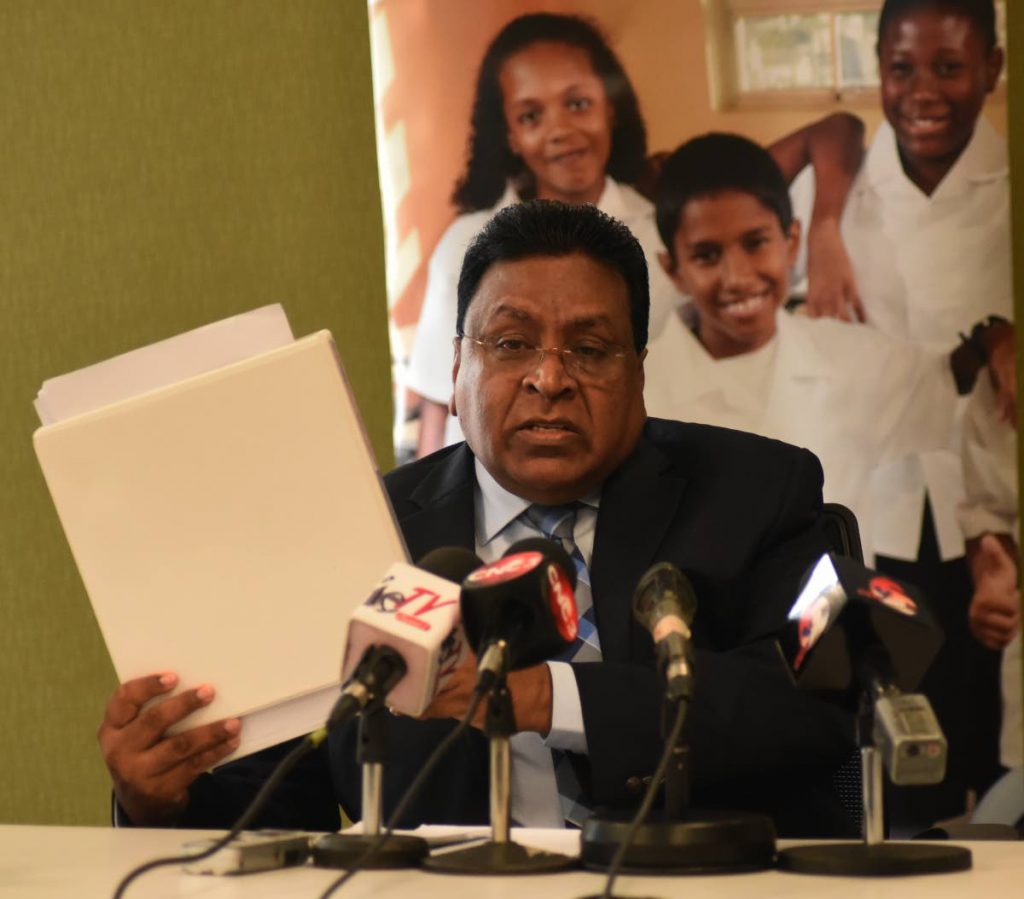Chief Education Officer: Wrong info published on SEA placements

Chief Education Officer Harrilal Seecharan hasdescribed an article headlined Reviewing the leaked SEA 2018 data, by Nigel Henry, lead analyst and CEO of Solution by Simulation, as erroneous.
He made the statement at a news conference at the Education Towers in Port of Spain yesterday.
“In the reporter’s information he is suggesting that denominational schools actually took 33 per cent. I don’t know how he generated this. There is an assertion made that there are principals who have selected more students in denominational schools.
“He (the writer) also spoke about his assertion of corruption and careless mistakes that in Belmont Boys' there were two cut-off scores.
"If we are dealing with government schools, there is only one score. SEA placement is controlled by a module which has been developed by CXC. It is located at CXC and that module actually performs all the calculations, whether it is students’ scores or numbers during the placement exercise.”
Seecharan said the SEA placement criteria were based on merit (scores students obtained in the exam), parental choice, the principal’s 20 per cent selection, gender, residence, and multiple births (twins, etc).
He said many of the assertions made in the article were “fundamentally flawed.”
“We follow the Concordat. For us here, at the technical level, we don’t have an option of saying 20 per cent or not, and we don’t have an option of saying you must take a child with a particular score, so it’s basically open to the principal.
"I want to correct this, and I have taken the opportunity to look at every single school. The data presented in the newspapers, which have been generating a lot of discussions and have called into question the integrity of people within the ministry and principals, are totally incorrect.”
Seecharan said neither the author nor the publisher of the article tried to validate any of the information put in the public domain, describing this as a fundamental violation of basic journalistic principles.
The criteria used for placement of students were shared with principals every year during the registration process, he said, but Henry’s assertions were made based on looking at the database without understanding the process.
“The ministry stands by what we do. The process we use, we can legally defend and therefore it is unfortunate that the researcher did not take the time to speak to the ministry in terms of seeking any clarifications or validating any of the statements. We have no difficulty with people, and there are researchers who have applied to us where we have provided access to data, once certain ethical considerations are taken.’
Seecharan said the only reason the ministry did not make the database available to the public was to protect personal information about students.
“If published it will be a violation under the Freedom of Information Act. Therefore, as a ministry we have a responsibility to protect personal information from the public.”


Comments
"Chief Education Officer: Wrong info published on SEA placements"